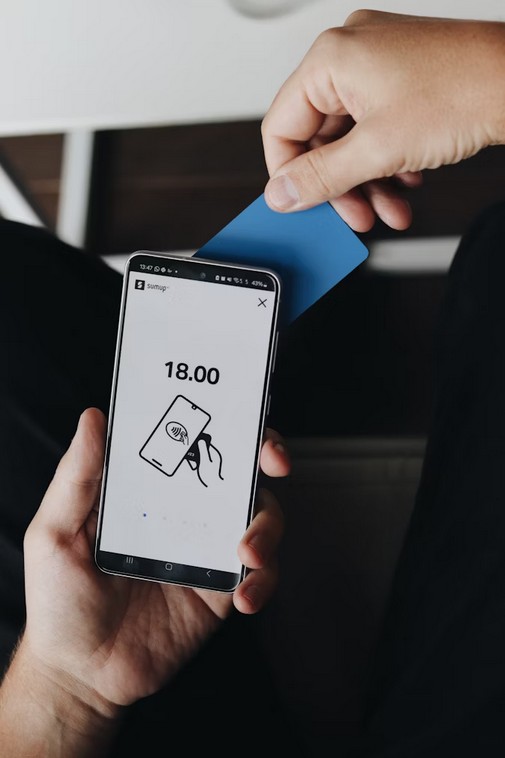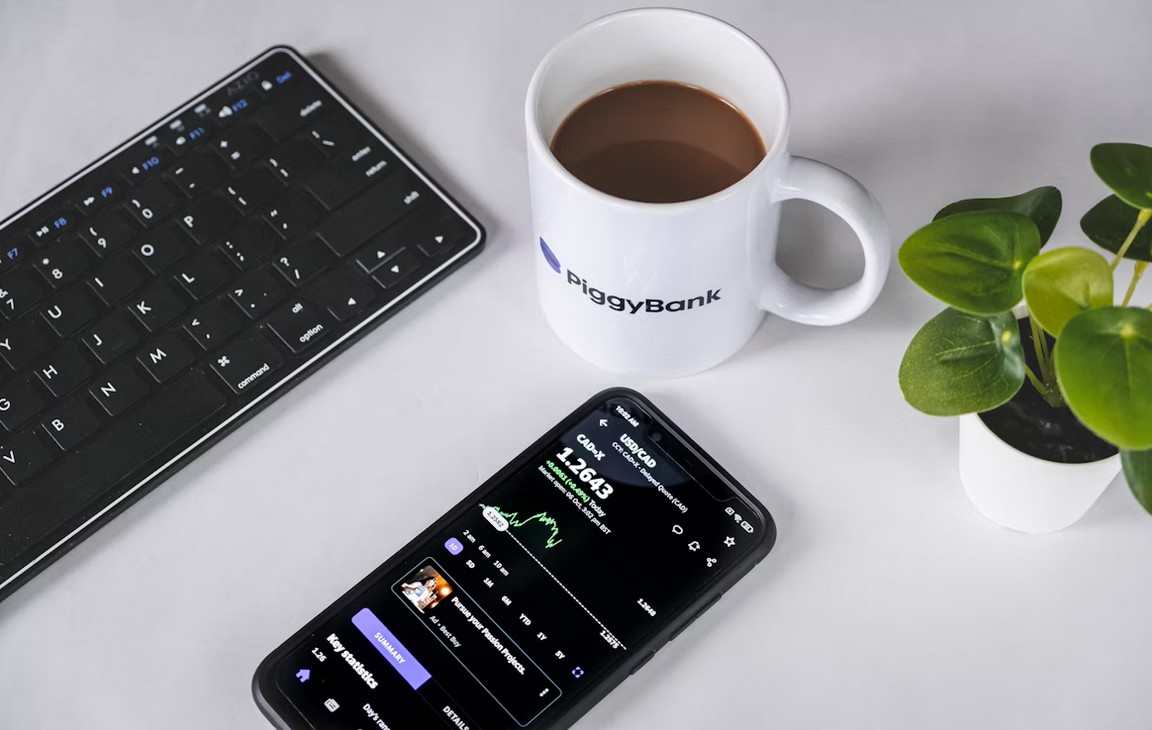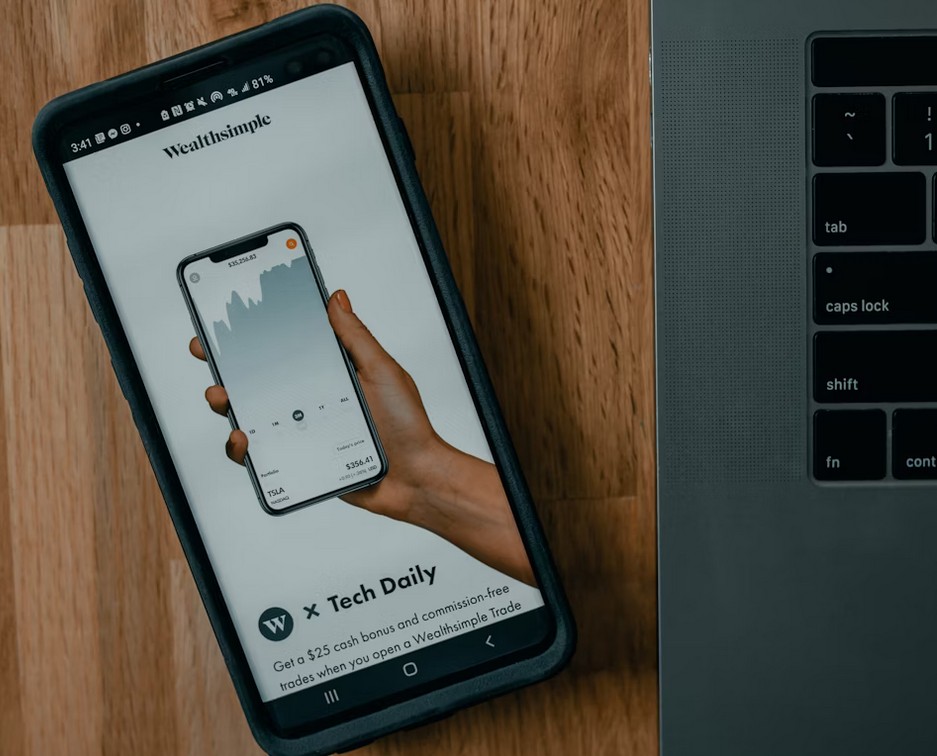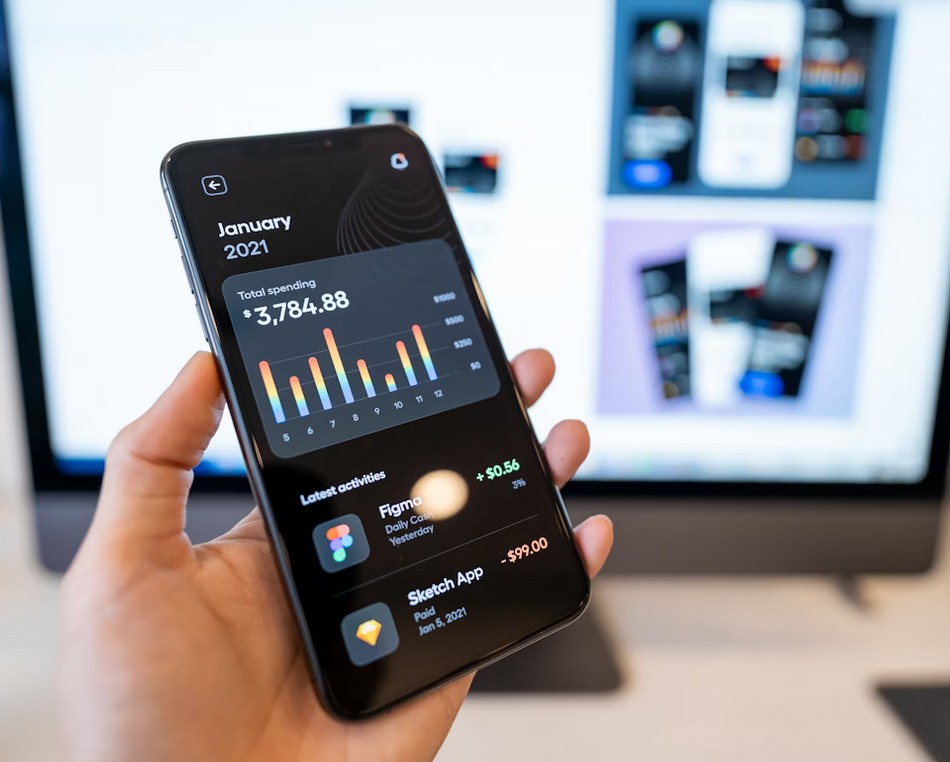Financial Empathy: Your Key to Asia
Go beyond translation. Connect with users on a deeper, cultural level.
Understand and respond to the unique financial behaviors, cultural norms, and technological landscape of Asia to transform your product.
Your app’s success hinges on trust. We help you localize trust signals that resonate with every user.
Money is a mirror of culture. Our experts help you understand the emotional codes of finance in Asia.
Success in Asia means building for all devices and networks. Our strategy ensures your app is fast and reliable.
Unleash Asia: The Ultimate Guide to Fintech App Localization.
Are you looking to expand your fintech app into the world’s most dynamic and fastest-growing digital economy? In today’s interconnected world, reaching a global audience is a necessity for any ambitious fintech company. The Asian market, in particular, presents an unparalleled opportunity with its immense population, booming middle class, and rapid technological adoption. Yet, for many companies, this potential remains elusive, a consequence of overlooking the single most crucial element for success: financial empathy. This is far more than a simple translation; it’s a deep, nuanced understanding of how diverse cultures perceive, interact with, and emotionally connect with money.
This comprehensive guide will serve as a definitive buyer’s guide for ambitious retailers and fintech leaders seeking to unlock the vast potential of the Asian market through strategic localization. We will move beyond the basic checklist of language and currency conversion to explore a groundbreaking framework for success.
The Counter-Intuitive Truth About the Asian Market: More Than a Monolith.
The first myth to debunk for any serious fintech app localization Asia strategy is the idea of a monolithic «Asian market.» This vast region is an intricate mosaic of cultures, economies, and technological ecosystems. The financial habits and consumer behaviors that define one country can be entirely alien to its neighbor.
Consider a striking comparison:
- In Japan, a country with a remarkable 94% cashless payment adoption rate, the preferred method isn’t a credit card—it’s a QR code-based mobile app like PayPay or Line Pay. Financial transactions are often meticulously planned and rooted in a deep-seated culture of trust and efficiency.
- Drive south to the Philippines, and you’ll find GCash isn’t just for payments; it’s a powerful financial tool used to pay utility bills, buy insurance, and even invest in government bonds. For millions of Filipinos, who are often underbanked, apps like this serve as a primary financial lifeline.
- Meanwhile, in Vietnam, the rapid rise of MoMo demonstrates a consumer preference for a seamless, all-in-one «super-app» experience that integrates payments with everything from movie tickets to food delivery.
This isn’t just a difference in payment preference; it’s a fundamental difference in the very role of finance in daily life. A true fintech app translation goes beyond converting text; it translates your value proposition to fit the cultural and emotional landscape of your target audience. A generic approach to Asian market app localization is not just ineffective; it can be actively detrimental. It signals to potential users that your app is a foreign entity that doesn’t understand their needs, lacks cultural competence, and, most importantly, is not a trustworthy financial partner.
H3: The Oris Translations Advantage: Your Strategic Partner in Financial Empathy This is where a strategic approach to professional translation services becomes an absolute necessity. At Oris Translations, we believe that true localization is a form of cultural and financial intelligence. Our expertise goes beyond linguistic accuracy to ensure your brand’s message resonates with the financial heartbeat of your target user. We understand that a seamless UX, a trustworthy security protocol, and a culturally sensitive interface are all as important as the words themselves. For a deeper understanding of our services and capabilities, visit our professional translation services pillar page.
Why App Localization is a Business Imperative.
It’s a strategic investment that unlocks a massive, untapped user base in Asia’s digital economy.
In a region where mobile-first is the norm, an app tailored to local technology and user habits will always outperform a generic one.
The Five Pillars of Financial Empathy: A Definitive Framework for Strategic Fintech App Localization.
To truly succeed, your app localization strategy must be built on a foundation of «financial empathy.» This framework provides a clear roadmap, guiding your team to create an application that feels native, secure, and utterly indispensable to your target audience. It is an intricate process that demands more than simple language conversion. It requires a deep dive into the nuances that govern financial relationships.
H3: Pillar 1: Localize the Trust Signal, Not Just the UI
Standard Advice: «Use the local language and currencies.» While essential, this is merely the first step.
Innovative Twist: Trust is built differently across Asia. It is the single most important factor for any financial application. In some markets, particularly those with a history of strong state or corporate influence, trust is institutional; displaying the logos of local banks you partner with or official government certifications is a powerful signal of credibility. In China, for example, your app’s credibility can be tied directly to its association with a state-owned bank or a major tech conglomerate. Users will immediately scrutinize these partnerships.
In other regions, like Southeast Asia, trust is more social; integrating with dominant super-apps like WeChat, Grab, or Gojek makes your app part of an established, trusted ecosystem. A user is far more likely to download and use an app that their friends are already using within a platform they trust.
Furthermore, in certain regions, trust is built through «security theater»—visible, multi-step authentication processes and conspicuous security badges can actually make users feel safer, even if they add extra clicks. This is particularly true in markets where scams and digital fraud are common. The perception of security is often as important as the reality.
Actionable Tip: Conduct user tests specifically focused on trust. Show users your app’s security and sign-up flow and ask, «What on this screen makes you feel safe? What makes you nervous?» Pay attention to both verbal and non-verbal cues. This invaluable feedback will provide critical insights into how your target audience perceives security.
The Role of Financial Translation Services in Building Trust.
A single word can make or break a user’s trust. The subtle nuances in a term like «investment» or «savings» can carry different connotations in different cultures. For instance, in some cultures, the word for «loan» might be associated with shame or a last resort, whereas in others, it is a normal part of financial life. Our financial translation services ensure that every term, from a security pop-up to a legal disclaimer, is not only linguistically accurate but also culturally appropriate, fostering a deeper sense of security and reliability. To learn more about how we specialize in this, visit our financial translation services pillar page.
Deeper Dive into Trust Signals by Region
- China: Focus on displaying credentials, government-issued licenses, and partnerships with major banks or tech firms like Tencent or Alibaba. Users expect a high degree of integration and official validation.
- India: Trust is often built through a combination of official government mandates (like UPI compliance) and social proof. Reviews, user testimonials, and a large user base are key.
- Southeast Asia (e.g., Indonesia, Vietnam): The trust signal is heavily tied to the «super-app» ecosystem. If your app is integrated with Gojek or Grab, you immediately inherit their trust and user base.
Pillar 2: Design for «Super-App» Integration, Not Just Isolation.
Standard Advice: «Make sure your app works well.»
Innovative Twist: In many parts of Asia, users do not live in a world of single-purpose apps. They live inside all-encompassing ecosystems like WeChat (China), KakaoTalk (Korea), or Gojek (Indonesia). A user’s digital habitat is their «super-app.» The success of your financial app Asia launch might depend on its ability to integrate into these ecosystems through mini-programs, APIs, or strategic partnerships. Localization means fitting into the user’s existing digital habitat, not forcing them to build a new one.
Actionable Tip: Explore the developer platforms of the major super-apps in your target country. Even a simple «Login with [Super-App]» feature can drastically lower barriers to entry and make your app feel like a seamless part of their digital life. A certified banking translation expert can help you navigate the complex technical and legal documentation required for these integrations, ensuring compliance and security.
The Ecosystem Approach: A Case Study in Financial Localization
The rise of super-apps is a powerful indicator of consumer behavior. Users prefer a single, convenient platform for all their needs rather than juggling multiple apps.
- WeChat (China): Users can pay bills, book flights, order food, and manage their finances all within the same application. A standalone financial app will struggle to gain traction against this convenience. The best strategy is to create a WeChat Mini Program, a lightweight application that lives inside the WeChat ecosystem.
- Grab (Southeast Asia): What started as a ride-hailing app has evolved into a financial powerhouse. GrabPay is now a dominant digital wallet in the region. Integrating with GrabPay is a non-negotiable step for any app aiming for the Southeast Asian market.
The Power of Certified Banking Translation for Super-App Integration
Integrating your app with a third-party platform, especially a «super-app,» requires precise and accurate communication of complex financial and security protocols. Our certified banking translation ensures that all the technical documentation, API instructions, and user interface elements for these integrations are flawlessly executed, safeguarding your data and reputation.
Pillar 3: Navigate the Cultural Code of Money.
Standard Advice: «Localize currencies and date formats.»
Innovative Twist: Money is deeply cultural. The color red signifies prosperity and good luck in China but is often associated with danger and debt in South Korea. The number 4 is considered unlucky in China and Japan because it sounds similar to «death,» whereas the number 8 is incredibly lucky. In India, a large investment might be more palatable if broken down into smaller, more manageable monthly amounts (e.g., ₹100/month) rather than a single lump sum, reflecting a cultural preference for gradual financial planning. Your app’s color scheme, imagery, and even how you present numbers and financial products must respect these deeply ingrained cultural codes.
The Subtle Art of Cultural Financial Nuance
- Imagery and Icons: The image of a piggy bank might resonate in some cultures, while others might prefer a traditional pouch or a lotus flower, which represents purity and wealth in some parts of Asia.
- Tone and Language: The language used to discuss money can be a deal-breaker. A direct, blunt tone might be seen as aggressive, whereas a more deferential or community-oriented tone could build trust.
- Financial Goals: In many Asian cultures, financial decisions are often family-oriented. Your app should reflect this. Features that allow a user to manage money for their family or send money to relatives can be highly successful.
Actionable Tip: Hire a local cultural consultant for a design audit. This small investment can prevent major brand missteps that could alienate your target audience from the outset. Furthermore, a skilled financial translation services team can provide valuable insights into these cultural nuances, helping you avoid costly mistakes.
Pillar 4: Hyper-Localize the UX for Connectivity and Devices.
Standard Advice: «Make sure your app loads quickly.»
Innovative Twist: A high-speed, seamless app experience in Singapore or South Korea, with their world-class fiber optic networks and high-end smartphones, will not translate to success in rural Indonesia, Vietnam, or the Philippines. In these regions, users may be relying on older Android models and patchy 3G or even 2G connections. Localization is not just about language; it’s about technical performance tailored to local infrastructure. A truly empathetic app is lightweight, functional on a variety of devices, and has robust offline functionality for critical features. This is a vital part of a comprehensive localize fintech app strategy.
The Global Disconnect: From Silicon Valley to Southeast Asia.
Many apps are built for a Western context, where ubiquitous high-speed internet and the latest devices are the norm. In a country like Vietnam, for example, the mobile-first generation often has access to low-cost, low-spec smartphones. An app that is data-heavy, has large image assets, or requires a constant, stable internet connection will fail to gain traction. Similarly, in parts of rural India, where internet access can be intermittent, users need a financial app Asia that can perform basic functions—like checking a balance or displaying a transaction history—even when they are offline.
Practical Steps for a Lightweight UX.
- Drastically Reduce App Size: Go through your app and optimize all image and video assets. Use vector graphics where possible. Strip out any unnecessary libraries or code. The smaller your app’s download size, the more likely a user is to install it, especially in markets where data is expensive.
- Implement Offline Functionality: Identify critical functions that a user might need to perform without a strong internet connection. This could include viewing account balances, past transactions, or bill due dates. Sync the data when a connection is re-established.
- Thorough Device Testing: Go beyond basic emulators. Use device lab services to test your app on the most common, and often older, Android models in your target market. This will reveal performance bottlenecks that are invisible on a high-spec device.
- Optimize for High Latency: Even with a connection, latency can be a major issue. Design your app’s UI to handle slow loading times gracefully. Use skeletons or placeholders instead of blank screens, and provide clear loading indicators.
The Role of a Professional Translation Service in UX.
Beyond the technical side, a strong professional translation services partner understands how to optimize content for lower-bandwidth situations. This may involve using shorter, more concise phrases, avoiding overly descriptive language that requires more data to load, and ensuring the interface remains intuitive even when elements are slow to load. Our certified translation experts understand the specific challenges of these markets. For more information on how we can help you with your global expansion, visit our professional translation services pillar page.
Pillar 5: Regulatory Technology (RegTech) as a Feature, Not a Hurdle.
Standard Advice: «Comply with local laws.» While this is a baseline requirement, the most successful companies do more.
Innovative Twist: In Asia, compliance with regulations is more than just a back-office chore; it can be a powerful trust-building tool and a source of competitive advantage. Regulations like PSD2 in Singapore, the RBI’s mandates in India, or the different data localization laws across the region are not just barriers but design constraints that can lead to more secure and innovative products. For example, India’s UPI (Unified Payments Interface) regulatory framework has enabled incredibly simple and secure peer-to-peer payments, making them a core feature for any successful app.
You should frame your compliance (e.g., secure data handling, local data storage, robust KYC protocols) as a primary marketing and trust-building benefit within the app itself. By demonstrating a clear commitment to user privacy and security—and being certified to do so—you can turn a legal requirement into a compelling reason for customers to choose you. This is where a certified banking translation and a deep understanding of local laws are non-negotiable.
The Strategic Advantage of Proactive Compliance.
- Building Trust Through Transparency: Showcasing your adherence to local data privacy laws can be a powerful emotional trigger. Users are increasingly wary of how their financial data is handled. Explicitly stating that data is stored locally and securely, in accordance with local laws, builds immediate trust.
- Regulatory Sandboxes: Many Asian governments have created «regulatory sandboxes» to allow fintech companies to test new products and services in a controlled environment. Participating in these programs demonstrates your commitment to working with local authorities and can give you a head start on understanding and integrating future regulations.
- Turning KYC into a Seamless UX: KYC (Know Your Customer) is often a friction point in the user journey. However, a localized financial translation services partner can help you design a KYC process that feels intuitive and simple, rather than a bureaucratic hurdle. For example, using local identity verification systems and simplifying the language can make a multi-step process feel less daunting.
The Ultimate Partner for Your App Localization Strategy.
Creating an app for the Asian market requires a partner who understands the intricacies of fintech app localization Asia. A partner that can do more than just translate your words. You need a partner who can translate your value proposition, understanding the regulatory, cultural, and technical landscape to help you thrive. Our dedicated financial translation services page details our end-to-end capabilities, from legal and compliance documents to marketing content, ensuring every aspect of your app’s journey is handled with precision and care.
The Secret to Unlocking Asia’s $2 Trillion Fintech Market.

Learn the complete framework for building an application that feels truly native in every culture.
The traditional approach to localization often fails because it focuses on surface-level translation. This leaves your app feeling foreign and untrustworthy to local users.
The solution is financial empathy—a deep understanding of how local cultures perceive and interact with money. This approach builds a foundation of genuine trust.


The Essential Roadmap for Mastering the Full Spectrum of Fintech App Localization.
Your app’s success is built on its ability to navigate Asia’s diverse landscape. Our holistic approach ensures every aspect of your app’s journey is a success.
The Conclusion: From Localization to Transformation.
The companies that succeed in the Asian market will be those who move beyond a technical checklist and embrace a philosophy of «Financial Empathy.» They will understand that a seamless UX is built not just on code, but on a deep respect for local customs, payment habits, and emotional connections to money. This approach doesn’t just lead to higher download numbers; it builds lasting financial relationships. It transforms your app from a foreign tool into a trusted, indispensable local financial partner.
By internalizing the principles of financial empathy—localizing trust signals, designing for super-apps, navigating cultural codes, optimizing for local tech, and leveraging RegTech as a feature—you are not just adapting your product. You are transforming your entire value proposition to meet the unique and specific needs of the Asian consumer.
A Final Call to Action.
Don’t just translate your app. Translate your value proposition. Start by understanding the financial heartbeat of your target user, and build every feature to match its rhythm. This is the surest path to not just entering the market, but owning it.
H2: The Five Pillars of Financial Empathy: A Definitive Framework for Strategic Fintech App Localization (Continued) To truly succeed, your fintech app localization Asia strategy must be built on a foundation of «financial empathy.» This framework provides a clear roadmap, guiding your team to create an application that feels native, secure, and utterly indispensable to your target audience. We will now delve deeper into each pillar, providing the granular detail and actionable insights you need to build a truly successful financial application.
Pillar 1: Localize the Trust Signal, Not Just the UI.
Trust is the single most important currency in fintech. Without it, your application is a non-starter. But the way trust is communicated and perceived is not universal. The visual cues, partnerships, and user flows that signal security and credibility in New York or London are often meaningless or even counter-productive in Asia.
The Social and Institutional Fabric of Trust.
- Institutional Trust: In markets with strong regulatory bodies and established banking systems, like Singapore or Japan, users are accustomed to trusting institutions. Here, displaying logos of local banks you partner with, showcasing government-issued licenses, or highlighting a certified banking translation of your regulatory documents can immediately establish a baseline of credibility. This is about showing that you are an officially sanctioned, legitimate player.
- Social Trust: In other regions, trust is more decentralized and often tied to community or social networks. In countries like Vietnam or the Philippines, where a significant portion of the population is underbanked, a user’s trust is built on social proof. They trust what their friends and family use. This is where integrating with a «super-app» or leveraging peer-to-peer recommendations becomes a powerful trust signal. Your app’s reputation is intrinsically linked to the social network it inhabits.
- Relational Trust: Furthermore, some cultures, particularly in Southeast Asia, rely on relational trust. This is often an unspoken agreement built on familiarity and a history of positive interactions. Your app can foster this by offering personalized communication, responsive customer service, and features that make the user feel seen and understood.
H4: The UX of Security: More than Just Encryption
Beyond legal and social signals, the user interface itself must convey security. A generic, minimalistic design that works well in Europe may not suffice.
- Explicit Security Cues: Many Asian users prefer to see visible proof of security. This could mean adding security badges, using multi-step authentication processes with clear progress indicators, and providing real-time alerts for every transaction. These elements, which might be considered «clutter» elsewhere, are vital trust signals here.
- Biometric Integration: The widespread use of smartphones in Asia means that biometric security (fingerprint, facial recognition) is a powerful and expected feature. A seamless integration of these technologies not only improves security but also signals that your app is modern and trustworthy.
- Language and Tone: A simple pop-up that says «Transaction failed» can cause panic. A more empathetic message, translated with a financial translation services expert, might say, «We’re sorry, your transaction could not be completed at this time. Please try again later. For more information, visit our dedicated financial translation services page.» This small change in tone can build immense trust.
The Oris Translations Difference: Translating Trust.
A successful fintech app translation is about more than converting words; it’s about conveying a feeling. Our team of experts understands the nuanced ways different cultures perceive risk and security. We don’t just translate your legal disclaimers; we ensure they are culturally appropriate and foster confidence. We don’t just convert your UI text; we help you find the right words and phrases that make users feel safe, secure, and ready to engage with your financial services.
Pillar 2: Design for «Super-App» Integration, Not Just Isolation.
The «super-app» phenomenon is arguably the single most important factor for any app localization strategy in Asia. In this ecosystem, the battle is not between individual apps, but between entire platforms. Your app’s success hinges on its ability to fit into this pre-existing digital habitat.
The Economics of Integration.
Think of a «super-app» like a digital shopping mall. Users don’t go to the mall to visit one store; they go for the convenience of having everything in one place. Your app is a store within that mall.
- Lowering Barriers to Entry: Integrating with a dominant super-app drastically lowers a user’s barrier to entry. They don’t need to create a new account, enter their credit card information, or remember a new password. They can simply log in with their existing super-app credentials, making the onboarding process virtually frictionless. This is a game-changer for user acquisition in a highly competitive market.
- Access to a Built-in User Base: Super-apps like Grab, Gojek, and WeChat have hundreds of millions of users who are already accustomed to using their platforms for financial transactions. Integrating with these platforms gives you immediate access to a massive, pre-qualified user base.
- Leveraging Super-App Features: Integration also allows you to leverage the super-app’s existing features, such as peer-to-peer payments, chat functionality, and loyalty programs. This transforms your single-purpose app into a multi-purpose tool that fits naturally within the user’s daily life.
The Strategic Importance of Professional Translation Services in Integration.
The technical and legal documentation required to integrate with a super-app is complex. A single misstep in certified banking translation of API specifications or terms of service can lead to costly delays, security vulnerabilities, or outright rejection from the super-app’s platform. We provide meticulous and accurate translations of all technical, legal, and regulatory documents, ensuring your integration process is seamless and secure.
Pillar 3: Navigate the Cultural Code of Money.
Money is a mirror of culture. Every society has its own beliefs, superstitions, and emotional connections to wealth, debt, and prosperity. Ignoring these can lead to a disastrous market entry, even if your fintech app localization Asia is otherwise flawless.
The Language of Wealth and Debt.
- Lucky and Unlucky Numbers: In China, the number 8 is auspicious, symbolizing wealth and good fortune. Conversely, 4 is considered unlucky. This is so deeply ingrained in the culture that apartment buildings often skip the fourth floor. Your app should reflect this. Financial products with an 8 in their name or interest rate can be more appealing, while those with a 4 should be avoided.
- Colors and Symbolism: Red signifies good fortune and prosperity in China and Vietnam, making it a common color for auspicious gifts and red envelopes (hongbao). In South Korea, however, writing a person’s name in red ink is traditionally associated with death. In Thailand, the color for money is green. Your app’s color scheme and branding must be culturally sensitive to avoid sending the wrong message.
- Financial Goals and Communication: In many Asian cultures, financial decisions are a collective, family matter rather than a purely individual one. Your app’s marketing and features should reflect this. Instead of focusing on individual wealth, you might emphasize features that allow users to manage money for their family or send remittances.
The Role of a Financial Translation Services Expert.
A financial translation services expert does more than just translate your app’s text. They provide cultural consultancy, advising on everything from color palettes to idiomatic expressions that can make or break your app’s success. They ensure that your messages about savings, loans, and investments are not just understood, but that they resonate with the user’s cultural and emotional connection to money. For more information, visit our financial translation services pillar page.
Pillar 4: Hyper-Localize the UX for Connectivity and Devices.
In the West, we often take high-speed, reliable internet for granted. The average user in a major European or North American city has access to 4G or 5G networks, a powerful smartphone, and unlimited data plans. In many parts of Asia, this is not the case. Your app’s fintech app localization Asia strategy must account for the stark reality of intermittent connectivity, expensive data, and a wide array of low-spec devices.
The Technical Deep-Dive: Optimization Strategies.
For a truly effective Asian market app localization, your development team needs to move beyond generic performance metrics and adopt strategies tailored to resource-constrained environments.
- Code Splitting and Lazy Loading: Don’t load everything at once. Use code splitting to load only the necessary modules for a user’s initial interaction. Subsequent features can be loaded progressively in the background as the user navigates the app. This drastically reduces the initial load time and data consumption.
- Image and Asset Compression: Visuals are crucial, but they can be data hogs. Use highly optimized image formats like WebP or AVIF, and serve different image resolutions based on the user’s connection speed. Furthermore, minimize the use of large video or GIF assets that consume significant bandwidth.
- Robust Caching Mechanisms: Implement aggressive data caching to minimize repeat network requests. Once a user’s account data, transaction history, or other static content is loaded, it should be stored locally on the device so it can be accessed quickly even without an internet connection.
- Testing on Legacy Devices: A simple emulator won’t cut it. Use a device lab or an array of physical, low-cost smartphones and tablets common in your target market. Test your app’s performance on these devices to identify bottlenecks that might be invisible on high-end hardware.
The Business Case for Low-Spec Optimization.
This isn’t just a technical exercise; it’s a strategic business decision. By optimizing your app for a wider range of devices and network conditions, you unlock a massive user base that is often overlooked by competitors. This approach builds a reputation for reliability and thoughtfulness, which are critical traits for any financial app Asia. It signals to users that you understand their reality and are committed to providing a reliable service, regardless of their circumstances. This commitment to usability is an essential component of professional translation services and localization as a whole.
Pillar 5: Regulatory Technology (RegTech) as a Feature, Not a Hurdle.
For many Western fintechs, regulations are seen as a bureaucratic burden—something to be navigated and minimized. In Asia, however, the regulatory landscape can be a powerful driver of innovation and a key differentiator. A savvy app localization strategy will turn regulatory compliance into a competitive advantage.
Case Studies in RegTech Innovation
- India’s UPI: The Unified Payments Interface (UPI) is a prime example of how regulation can foster innovation. Mandated by the Reserve Bank of India, it is a real-time payment system that allows users to transfer money instantly between bank accounts using a simple virtual payment address. Instead of fighting it, successful fintechs like PhonePe and Paytm embraced UPI, making it the core of their service and becoming market leaders as a result.
- Singapore’s Regulatory Sandbox: The Monetary Authority of Singapore (MAS) has a well-known regulatory sandbox that allows fintechs to test new products and services in a controlled, less restrictive environment. Participating in this sandbox, and communicating this participation to your audience, immediately builds credibility and signals that your app is secure and legally vetted.
- Malaysia’s E-wallet Framework: Malaysia’s central bank, Bank Negara Malaysia, has a clear framework for e-wallet operators. Fintechs that have meticulously followed this framework have earned a high degree of trust from consumers and have been able to build complex ecosystems of payments, loyalty programs, and financial services. A certified banking translation partner is crucial for meticulously adhering to these specific legal and regulatory documents.
The Legal-Linguistic Imperative.
When it comes to compliance, there is zero room for error. A simple misinterpretation in a legal or regulatory document can lead to severe fines, loss of licenses, or even being banned from a market. This is where the service of a specialized financial translation services provider becomes non-negotiable.
- Precision Over Speed: Machine translation, while fast, is simply not equipped to handle the legal jargon and nuanced language of regulatory documents. A human expert with a background in both law and finance is required to ensure every clause, disclaimer, and term of service is translated with absolute precision.
- The Trust of Certification: Partnering with a provider that offers certified banking translation gives you and your users peace of mind. A certified translation is a guarantee of accuracy and adherence to professional standards, which is a powerful trust signal in itself. For more information on this crucial service, visit our financial translation services pillar page.
The Secret to Unlocking Asia’s $2 Trillion Fintech Market.

It’s not about translation; it’s about mastering the art of financial empathy in every culture.
Generic, one-size-fits-all approaches consistently fail in Asia’s fragmented market. They ignore crucial local regulations, unique cultural nuances, and the reality of mobile-first users.
A winning fintech app localization strategy adapts to local infrastructure, integrates with super-apps, and builds trust through cultural competence. This is your key to success.


The Definitive Road Map to Transforming Your Foreign App Into a Trusted, Indispensable Local Financial Partner.
Don’t just translate your app; transform it. Build a product that resonates deeply with your target audience and becomes an indispensable part of their daily financial life.
The Conclusion: From Localization to Transformation.
The companies that succeed in the Asian market will be those who move beyond a technical checklist and embrace a philosophy of «Financial Empathy.» They will understand that a seamless UX is built not just on code, but on a deep respect for local customs, payment habits, and emotional connections to money. This approach doesn’t just lead to higher download numbers; it builds lasting financial relationships. It transforms your app from a foreign tool into a trusted, indispensable local financial partner.
By internalizing the principles of financial empathy—localizing trust signals, designing for super-apps, navigating cultural codes, optimizing for local tech, and leveraging RegTech as a feature—you are not just adapting your product. You are transforming your entire value proposition to meet the unique and specific needs of the Asian consumer.
The Ultimate Partner for Your Journey.
Navigating this intricate landscape requires a partner who understands the intricacies of fintech app localization Asia. A partner that can do more than just translate your words. You need a partner who can translate your value proposition, understanding the regulatory, cultural, and technical landscape to help you thrive. Our dedicated financial translation services page details our end-to-end capabilities, from legal and compliance documents to marketing content, ensuring every aspect of your app’s journey is handled with precision and care.
Your fintech app must be a partner, not just a tool.



By understanding the collective nature of financial decisions in many Asian cultures, you can create a product that builds lasting, multi-generational relationships.

A Final Call to Action.
Don’t just translate your app. Translate your value proposition. Start by understanding the financial heartbeat of your target user, and build every feature to match its rhythm. This is the surest path to not just entering the market, but owning it.
The Buyer’s Guide: Why Your Fintech App Localization Asia Strategy is Your Ultimate Market Access Point.
Expanding into Asia is not just a business decision; it’s a high-stakes investment. For retailers and fintech leaders, the allure is undeniable: a market of over 4.5 billion people with a rapidly expanding digital economy. However, the path to success is littered with failures of companies that underestimated the complexity of the region. This guide is your ultimate blueprint, transforming a daunting challenge into a clear, strategic roadmap. A key component of this journey, one often overlooked, is securing top-tier professional translation services and financial translation services that go beyond simple language conversion.
Pillar 1: Localize the Trust Signal, Not Just the UI.
Trust is the single most important currency in fintech. Without it, your application is a non-starter. But the way trust is communicated and perceived is not universal.
The Psychological Impact of Trust.
Trust is a cognitive shortcut. Users don’t have the time to vet every app. They rely on subconscious signals to decide if a product is safe.
- Cognitive Fluency: An app that looks, feels, and sounds familiar is easier for the brain to process, and this ease of processing is often subconsciously interpreted as a sign of safety and trustworthiness. If your app uses the right language, cultural symbols, and design patterns, users feel an immediate sense of familiarity and comfort.
- Familiarity Bias: People are inherently biased towards what is familiar. If your app integrates with a local payment gateway or a «super-app» they already use, it instantly bypasses the initial mistrust that comes with a foreign brand. This is where a fintech app localization Asia strategy pays dividends.
- Authority Signals: In many Asian cultures, authority is a powerful trust signal. This can be the logo of a major bank, a government certification, or a public endorsement from a well-known local entity. These signals act as a powerful anchor, validating your app’s credibility in the user’s mind.
The Oris Translations Difference: Translating Trust.
A successful fintech app translation is about more than converting words; it’s about conveying a feeling. Our team of experts understands the nuanced ways different cultures perceive risk and security. We don’t just translate your legal disclaimers; we ensure they are culturally appropriate and foster confidence. We don’t just convert your UI text; we help you find the right words and phrases that make users feel safe, secure, and ready to engage with your financial services.
Pillar 2: Design for «Super-App» Integration, Not Just Isolation.
The «super-app» phenomenon is arguably the single most important factor for any app localization strategy in Asia. In this ecosystem, the battle is not between individual apps, but between entire platforms. Your app’s success hinges on its ability to fit into this pre-existing digital habitat.
The Future of Super-Apps: Vertical Integration.
Super-apps are no longer just about payments and ride-hailing; they are becoming comprehensive financial hubs.
- In-App Financial Products: Platforms like WeChat in China and Gojek in Indonesia are now offering wealth management, micro-insurance, and even lending services directly within their ecosystems. This creates a new competitive dynamic. A foreign fintech must either partner with these platforms to offer their services or compete directly for a user’s attention, which is an uphill battle.
- Leveraging User Data: The massive amount of user data held by super-apps allows them to offer highly personalized financial products. A successful integration strategy must seek to leverage these APIs and data to offer a better, more tailored service than a competitor. This requires meticulous and accurate certified banking translation of complex API documentation.
The Strategic Importance of Professional Translation Services in Integration.
The technical and legal documentation required to integrate with a super-app is complex. A single misstep can lead to costly delays, security vulnerabilities, or outright rejection from the platform. We provide meticulous and accurate translations of all technical, legal, and regulatory documents, ensuring your integration process is seamless and secure.
Pillar 3: Navigate the Cultural Code of Money.
Money is a mirror of culture. Every society has its own beliefs, superstitions, and emotional connections to wealth, debt, and prosperity. Ignoring these can lead to a disastrous market entry, even if your fintech app localization Asia is otherwise flawless.
H4: Cultural Attitudes Towards Debt and Investment.
- Debt Aversion in Japan: In Japan, there is a strong cultural emphasis on financial prudence and avoiding debt. While credit cards are common, personal loans and micro-lending are often viewed with skepticism. Your app’s messaging around debt should be subtle, focusing on «financial flexibility» or «short-term solutions» rather than explicitly promoting loans.
- The Micro-Lending Boom in India: In stark contrast, India has seen a massive boom in micro-lending and BNPL (Buy Now, Pay Later) services. For a large segment of the population, these services are not a sign of financial distress but a tool for social mobility and managing daily expenses. Your app’s messaging should reflect this, framing these services as empowering and accessible.
- Collective Investment in Korea: In South Korea, there is a collective, community-oriented approach to finance. Family financial decisions are often made together. Your app could benefit from features that allow for group savings or shared investment goals. A financial translation services expert can help craft the right messaging.
The Role of a Financial Translation Services Expert.
A financial translation services expert does more than just translate your app’s text. They provide cultural consultancy, advising on everything from color palettes to idiomatic expressions that can make or break your app’s success. They ensure that your messages about savings, loans, and investments are not just understood, but that they resonate with the user’s cultural and emotional connection to money. For more information, visit our financial translation services pillar page.
Pillar 4: Hyper-Localize the UX for Connectivity and Devices.
Your app’s fintech app localization Asia strategy must account for the stark reality of intermittent connectivity, expensive data, and a wide array of low-spec devices.
The Mobile-Only Mindset.
For many users in Asia, their smartphone is their only computer. They have never used a desktop. The user journey must be intuitive and entirely self-contained on a mobile device. This means:
- No «Desktop» Features: Avoid designing features that assume a user has a larger screen or a keyboard.
- Intuitive Gestures: Rely on universally understood mobile gestures like swiping, pinching, and tapping.
- Simple Navigation: The app’s navigation should be crystal clear. Avoid complex menus or multi-level hierarchies that could confuse a new user.
The Business Case for Low-Spec Optimization.
This isn’t just a technical exercise; it’s a strategic business decision. By optimizing your app for a wider range of devices and network conditions, you unlock a massive user base that is often overlooked by competitors. This approach builds a reputation for reliability and thoughtfulness, which are critical traits for any financial app Asia.
Pillar 5: Regulatory Technology (RegTech) as a Feature, Not a Hurdle.
For many Western fintechs, regulations are seen as a bureaucratic burden. In Asia, however, the regulatory landscape can be a powerful driver of innovation and a key differentiator. A savvy app localization strategy will turn regulatory compliance into a competitive advantage.
Building a Global-Ready, Local-First Product
A strong RegTech strategy is the foundation for creating a product that is both compliant and scalable. This means:
- Modular Design: Design your app’s architecture in a modular way so that different regulatory requirements (e.g., KYC protocols, data storage rules) can be swapped in or out easily for different markets.
- Automated Compliance: Use RegTech solutions to automate compliance checks, fraud detection, and transaction monitoring, freeing up your team to focus on innovation.
- The Power of Certified Banking Translation: The legal and linguistic imperative is paramount. A certified banking translation expert can ensure that every legal document, from a privacy policy to a partnership agreement, is flawlessly translated and legally sound in your target market. This is a non-negotiable step for any serious player. For more information on this crucial service, visit our financial translation services pillar page.
We build for the future while optimizing for the present.



This dual-strategy ensures your app is accessible to a broader audience, demonstrating your commitment to inclusivity and reliability in all market conditions.

The Conclusion: From Localization to Transformation.
The companies that succeed in the Asian market will be those who move beyond a technical checklist and embrace a philosophy of «Financial Empathy.» They will understand that a seamless UX is built not just on code, but on a deep respect for local customs, payment habits, and emotional connections to money. This approach doesn’t just lead to higher download numbers; it builds lasting financial relationships. It transforms your app from a foreign tool into a trusted, indispensable local financial partner.
By internalizing the principles of financial empathy—localizing trust signals, designing for super-apps, navigating cultural codes, optimizing for local tech, and leveraging RegTech as a feature—you are not just adapting your product. You are transforming your entire value proposition to meet the unique and specific needs of the Asian consumer.
The Ultimate Partner for Your Journey.
Navigating this intricate landscape requires a partner who understands the intricacies of fintech app localization Asia. A partner that can do more than just translate your words. You need a partner who can translate your value proposition, understanding the regulatory, cultural, and technical landscape to help you thrive. Our dedicated financial translation services page details our end-to-end capabilities, from legal and compliance documents to marketing content, ensuring every aspect of your app’s journey is handled with precision and care.
A Final Call to Action.
Don’t just translate your app. Translate your value proposition. Start by understanding the financial heartbeat of your target user, and build every feature to match its rhythm. This is the surest path to not just entering the market, but owning it.
The Ultimate Guide to Fintech App Localization in Asia
Your definitive guide to building a trusted brand and achieving success in the Asian market.

The roadmap for market ownership is built on financial empathy, not just code.
Your journey from a foreign app to a local leader begins with a commitment to understanding your user’s financial life.

Localization is your ultimate trust signal in Asia’s diverse landscape.
Build trust by integrating with local super-apps, showcasing partnerships, and communicating your commitment to data privacy in every market.

Your product’s success is a direct result of its ability to meet a real need.
The most impactful financial apps in Asia are those that simplify complex financial challenges and empower users in their daily lives.

Start your journey to becoming a trusted local partner today.
The first step to owning the market is understanding it. Get in touch to see how our expertise can make your global vision a reality.
Get In Touch with Our Experts.
We’re here to answer your questions. Contact our team to learn how our specialized services can accelerate your market entry.
Let’s Build Your Success Story in Asia
Ready to transform your financial app and connect with a massive new audience? Tell us about your project and we’ll show you what’s possible.






